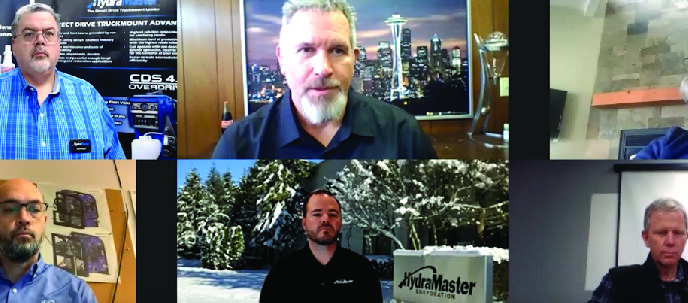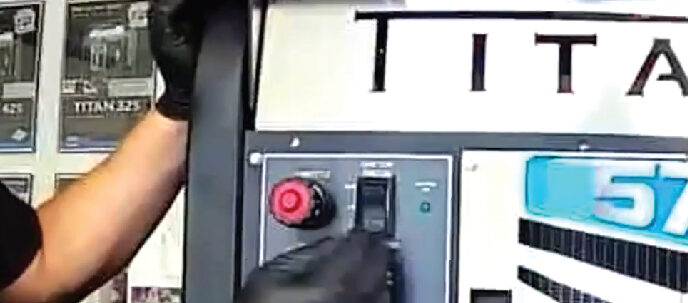Wastewater Disposal – What’s a cleaner and restorer supposed to do?
 Why should I be concerned about the wastewater resulting from my carpet cleaning services?
Why should I be concerned about the wastewater resulting from my carpet cleaning services?
Several times a month, we get a question about where the wastewater (or recovered material) generated from operating a truckmount, portable. or even low moisture carpet cleaning system should be disposed of. It does not take long when perusing on-line forums or Facebook groups made up of cleaners and restorers to hear the story of a carpet cleaner who has found trouble with local law enforcement agents over what is the illegal dumping of wastewater from a waste tank into the storm sewer system. Stories are told of large fines being levied against the cleaning company. This always generates a lot of questions from other carpet cleaning companies about what the proper way to dispose of wastewater is.
We could give you our opinion, but it is always better to hear from independent experts:
“Wastewater from carpet cleaning may contain dirt, soap, oil, grease, solvents, and other toxic chemicals (that pre-existed in the carpet). These common pollutants can enter our waterways and harm the plants and animals that live there”
Good business practices for Carpet cleaning and wastewater disposal – State of Washington Department of Ecology
“There are at least five areas of potential concern regarding wastewater disposal: Synthetic fibers, solvent spotters, pesticides, phosphates, and industrial soils”
Wastewater Disposal Procedures – Society of Cleaning and Restoration Technicians (SCRT), Copyright 1994, Third Edition 2010
It is unethical and ILLEGAL to dispose of your wastewater into the storm drain system
“Storm drains discharge directly into lakes, creeks, and waterways untreated. This is  why it is dangerous and ILLEGAL to dispose of carpet cleaning wastewater into the storm drain system (including driveways, parking lots, and street gutters). Carpet cleaning businesses must implement appropriate best management practices (BMPs) to prevent these pollutants from entering storm drains or ditches.”
why it is dangerous and ILLEGAL to dispose of carpet cleaning wastewater into the storm drain system (including driveways, parking lots, and street gutters). Carpet cleaning businesses must implement appropriate best management practices (BMPs) to prevent these pollutants from entering storm drains or ditches.”
Good business practices for Carpet cleaning and wastewater disposal – State of Washington Department of Ecology
“There shall be NO discharge of wastewater to storm water management systems or onto streets, curbing or drains feeding these systems”
Wastewater Disposal Procedures – Society of Cleaning and Restoration Technicians (SCRT), Copyright 1994, Third Edition 2010
So what is the best way to dispose of wastewater resulting from my carpet cleaning services?
“Disposing wastewater within a sanitary sewage treatment system is allowed in most municipalities (consult with local regulations). Under most conditions, this is the preferred method of wastewater disposal.”
Wastewater Disposal Procedures – Society of Cleaning and Restoration Technicians (SCRT), Copyright 1994, Third Edition 2010
“Arrange with the client to allow you to discharge into the toilet, bathtub, or utility sink that flows to the sanitary sewage treatment system. If this is not possible, plan to transport the wastewater off-site and dispose of it properly and an authorized discharge point.”
Good business practices for Carpet cleaning and wastewater disposal – State of Washington Department of Ecology
They HydraMaster Automatic Wastewater Disposal System (AWDS) is the most efficient  way to transfer your wastewater back into the home or business you are cleaning so that it can be disposed of into a bathtub, toilet, or industrial sink where it enters into the sanitary sewage treatment system. Stay compliant – Stay Safe! Transporting 70-100 gallons of wastewater back to your facility or another disposal site adds hundreds of pounds of weight to your van potentially causing additional wear and tear and increases your fuel consumption.
way to transfer your wastewater back into the home or business you are cleaning so that it can be disposed of into a bathtub, toilet, or industrial sink where it enters into the sanitary sewage treatment system. Stay compliant – Stay Safe! Transporting 70-100 gallons of wastewater back to your facility or another disposal site adds hundreds of pounds of weight to your van potentially causing additional wear and tear and increases your fuel consumption.
Best practices for carpet cleaning wastewater management to help protect the environment and be a good citizen of your community:
- Check with local and state authorities for any special provisions on wastewater management to ensure you are in compliance with regulations
- Make sure that your equipment is well serviced and that all filters are operating properly. Maintain tanks, hoses, and fittings to prevent wastewater leaks or accidental discharges
- All recovered wastewater should be pre-filtered to remove synthetic fiber and other non-biodegradable materials, prior to disposal with your AWDS.
- Train all operators and cleaning technicians on appropriate carpet cleaning best management practices as well as pollution prevention and wastewater discharge requirements. Never discharge wastewater directly into the street, curbing, parking lot, or any area leading to the storm sewer system. Never discharge wastewater directly into natural bodies of water or to land surrounding natural bodies of water.
- The pH of your wastewater should range from 5.5 to 9
- Use your AWDS system to transport your wastewater into a home or business where it can be properly discharged into the sanitary sewage treatment system.
For more information, you can also watch this video.
Tags: Auto Wastewater Disposal System, Automatic Wastewater Disposal System, AWDS, environment, legal, pollutants, waste, wastewater, water disposal





